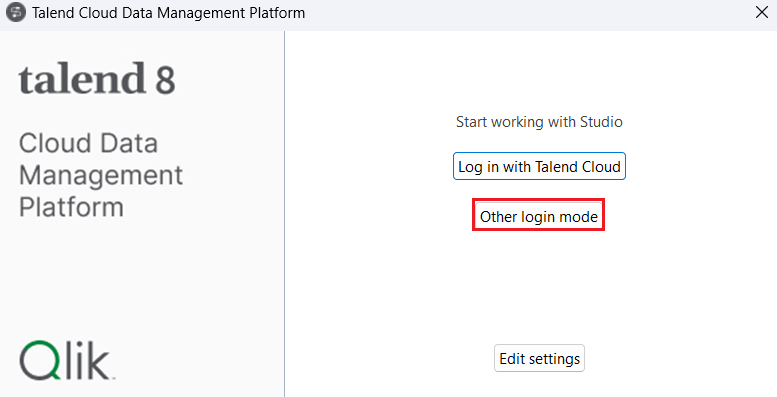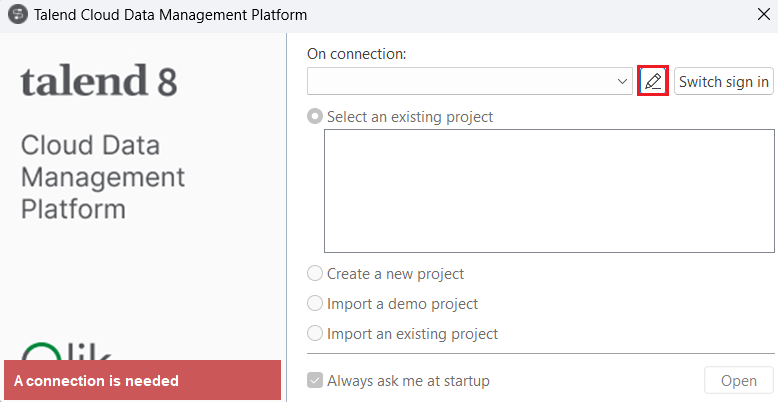Discover how a bimodal integration strategy can address the major data management challenges facing your organization today.
Get the Report →Connect to SingleStore Data and Transfer Data in Talend
Integrate SingleStore data with standard components and data source configuration wizards in Talend Open Studio.
This article shows how you can easily integrate the CData JDBC driver for SingleStore into your workflow in Talend. This article uses the CData JDBC Driver for SingleStore to transfer SingleStore data in a job flow in Talend.
Connect to SingleStore in Talend as a JDBC Data Source
You can follow the procedure below to establish a JDBC connection to SingleStore:
- Add a new database connection to SingleStore data: To add a new connection, expand the Metadata node, right-click the Db Connections node, and then click Create Connection.
- In the resulting wizard, enter a name for the connection.
On the next page, select Generic JDBC from the DB Type menu and enter the JDBC URL.
The following connection properties are required in order to connect to data.
- Server: The host name or IP of the server hosting the SingleStore database.
- Port: The port of the server hosting the SingleStore database.
- Database (Optional): The default database to connect to when connecting to the SingleStore Server. If this is not set, tables from all databases will be returned.
Connect Using Standard Authentication
To authenticate using standard authentication, set the following:
- User: The user which will be used to authenticate with the SingleStore server.
- Password: The password which will be used to authenticate with the SingleStore server.
Connect Using Integrated Security
As an alternative to providing the standard username and password, you can set IntegratedSecurity to True to authenticate trusted users to the server via Windows Authentication.
Connect Using SSL Authentication
You can leverage SSL authentication to connect to SingleStore data via a secure session. Configure the following connection properties to connect to data:
- SSLClientCert: Set this to the name of the certificate store for the client certificate. Used in the case of 2-way SSL, where truststore and keystore are kept on both the client and server machines.
- SSLClientCertPassword: If a client certificate store is password-protected, set this value to the store's password.
- SSLClientCertSubject: The subject of the TLS/SSL client certificate. Used to locate the certificate in the store.
- SSLClientCertType: The certificate type of the client store.
- SSLServerCert: The certificate to be accepted from the server.
Connect Using SSH Authentication
Using SSH, you can securely login to a remote machine. To access SingleStore data via SSH, configure the following connection properties:
- SSHClientCert: Set this to the name of the certificate store for the client certificate.
- SSHClientCertPassword: If a client certificate store is password-protected, set this value to the store's password.
- SSHClientCertSubject: The subject of the TLS/SSL client certificate. Used to locate the certificate in the store.
- SSHClientCertType: The certificate type of the client store.
- SSHPassword: The password that you use to authenticate with the SSH server.
- SSHPort: The port used for SSH operations.
- SSHServer: The SSH authentication server you are trying to authenticate against.
- SSHServerFingerPrint: The SSH Server fingerprint used for verification of the host you are connecting to.
- SSHUser: Set this to the username that you use to authenticate with the SSH server.
Built-in Connection String Designer
For assistance in constructing the JDBC URL, use the connection string designer built into the SingleStore JDBC Driver. Either double-click the JAR file or execute the jar file from the command-line.
java -jar cdata.jdbc.singlestore.jarFill in the connection properties and copy the connection string to the clipboard.
![Using the built-in connection string designer to generate a JDBC URL (Salesforce is shown.)]()
A typical JDBC URL is below:
jdbc:singlestore:User=myUser;Password=myPassword;Database=NorthWind;Server=myServer;Port=3306;- Enter the path to the cdata.jdbc.singlestore.jar file, located in the lib subfolder of the installation directory.
![The connection to the JDBC data source. (QuickBooks is shown.)]()
- Right-click the connection and then click Retrieve Schema.
- Click Next with the default options to select the tables you want to import.
- Finish the wizard with the default options.
Output the Orders Table to a Flat File
You can follow the procedure below to transfer the Orders table to a flat file output component:
- In the Table Schemas node, drag the tables to the workspace.
- In the dialog that is displayed, select the tJDBCInput component.
- Next, drag a tFileOutputDelimited component from the Business Intelligence tab of the Palette into the workspace.
- Right-click the Orders tJDBCInput component and drag a vector to the output file.
![A simple transfer to a flat file. (QuickBooks is shown.)]()
Run the project to transfer the data.









